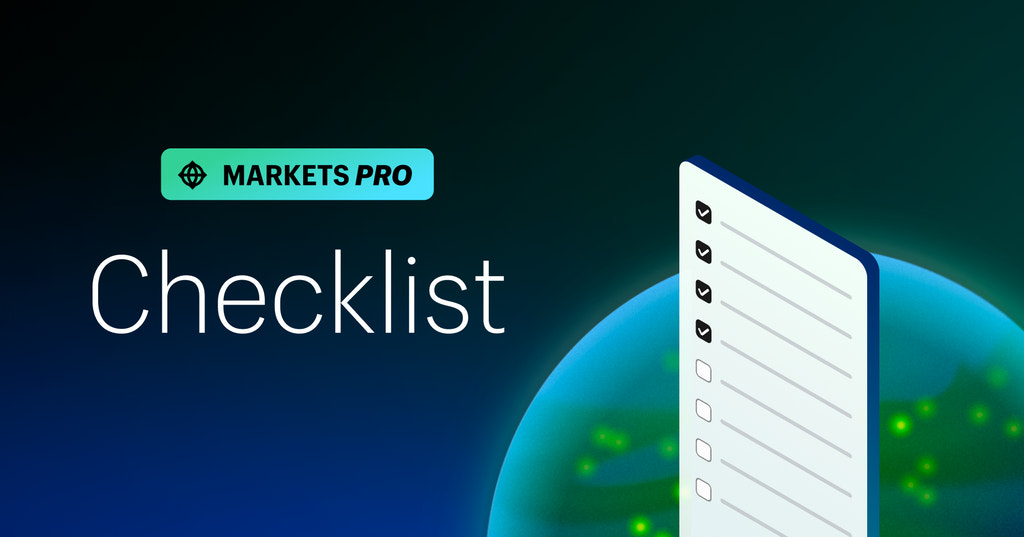Congratulations on activating Shopify Markets Pro! You’ve just taken a step toward global greatness. We understand that venturing into international markets can be daunting, but withMarkets Proin your corner, it’s now easier than ever before. To accelerate your journey to international selling success, we’ve put together a comprehensive checklist of best practices. Follow these top tips to maximize your success when selling internationally with Markets Pro.
Your Markets Pro optimization checklist
- Ensure duties collection by using Markets Pro labels
- Add new markets for your top regions and localize their buyer experience
- Find and grow international opportunities
- Grow organic search volumes by adding subfolders
- Improve conversion by translating your store
- Optimize your shipping rate strategy
- Update your shop's shipping policies and FAQs
- 投资于营销超负荷增长ob欧宝娱乐app下载地址your international markets
- Comply with regional consumer privacy rules
- Prepare to receive weekly payouts
1. Ensure duties collection by using Markets Pro labels
All international orders must be fulfilled using a Markets Pro–generated shipping label from our partner carrier accounts. This is to ensure correct duties handling, as Markets Pro guarantees duties amounts, collects them on your behalf, and remits them to carriers and customs agencies. While you have to use Markets Pro labels on international orders (this does not apply to domestic orders), how you fulfill those orders is up to you. Here are your options:
Print labels from Shopify
Make sure your warehouse staff know how toretrieve labels in your admin.
Use a compatible 3PL
Shopify Markets Pro orders can be fulfilled throughcompatible fulfillment services. The list of compatible partners continues to grow and will be updated in help docs.
Custom integration
If you or your 3PL require an integration, make sure to follow theintegration stepsand exclusively use Markets Pro labels for non-domestic orders.
2. Add new markets for your top regions and localize their buyer experience
At activation, Markets Pro automatically creates anInternationalmarket that includes all global regions you can sell to. This is to ensure you’re set up to sell everywhere from day one. To apply additional localization settings to specific regions, you can set up single country markets. For example, you can set up a single country market called “Canada,” while the long tail of countries (the dozens of countries from which you get less frequent sales), remain in the new International market that Markets Pro created for you.
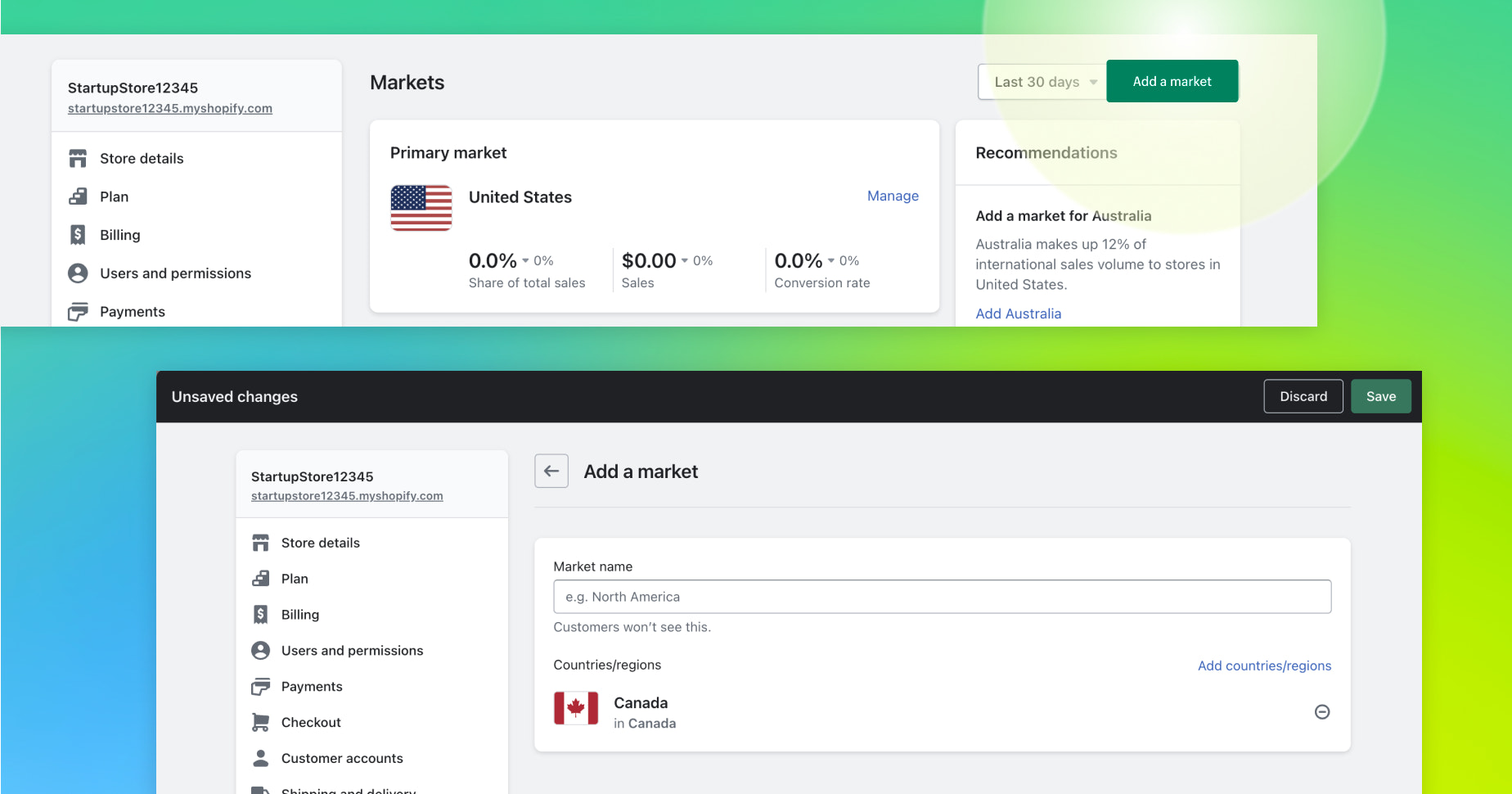
Advantages of setting up single-country markets
- Automatic redirection is enabled so customers are sent to the right store experience. (Note: automatic redirection is only applicable when you set up unique URLs like subfolders.)
- For regions where privacy rules prevent auto-redirection, the Geolocation feature will automatically create a pop-up, recommending customers navigate to the right URL.
- You have the ability to implement market-specific pricing.
- You can createcustom contenton your store for that country.
3. Find and grow international opportunities
Go into your store’s analytics and take a look at where you’re getting organic traffic. To better convert this traffic into sales, make sure you’ve set up markets for these regions. You can do this by adding these countries to the International market or bycreating one or more additional markets.
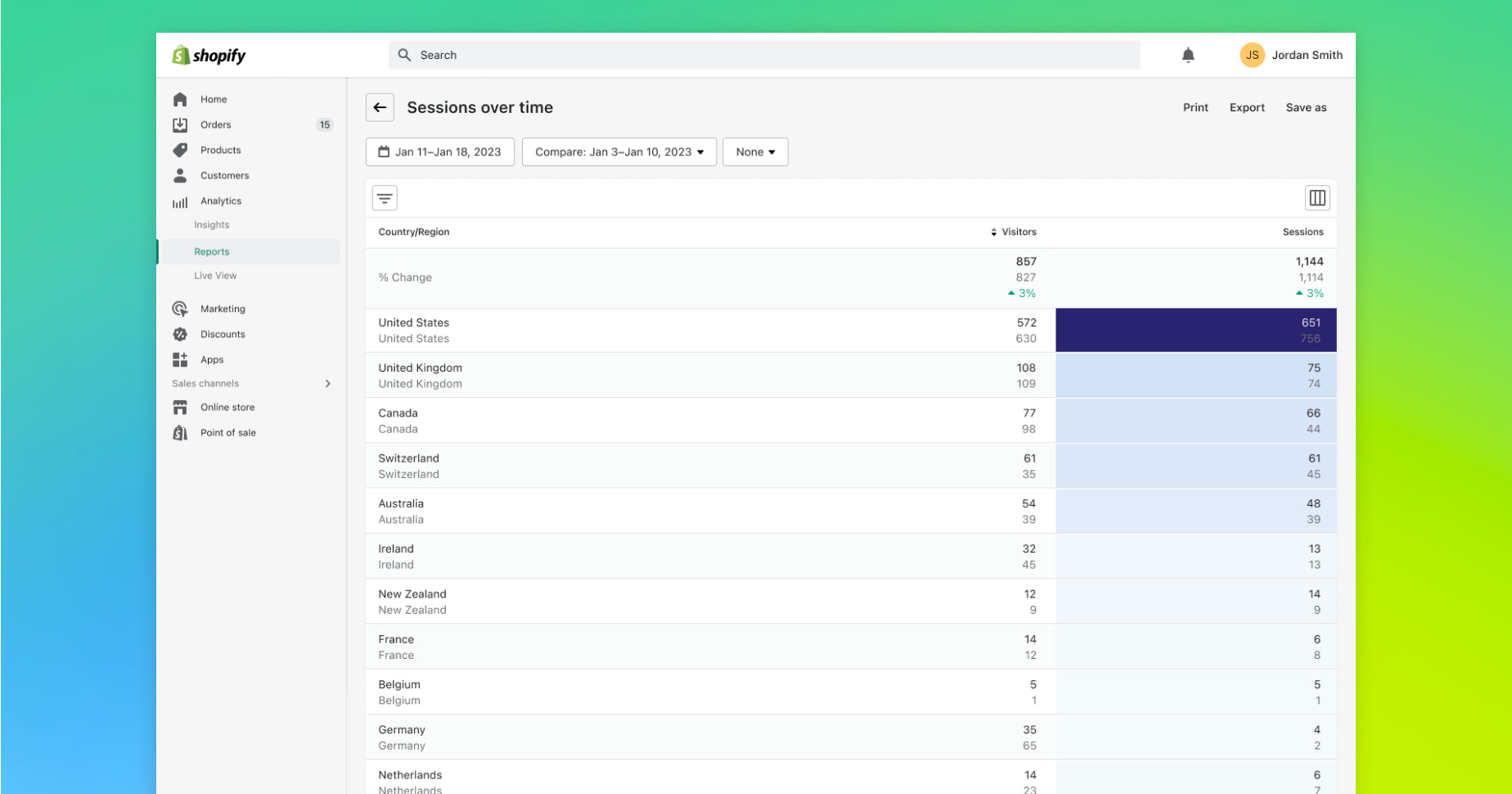
4. Grow organic search volumes by adding subfolders
Asubfolderis a localized extension to your URL that will optimize SEO in that country. Organic search volumegrows by more than 10%on average when subfolders are enabled.
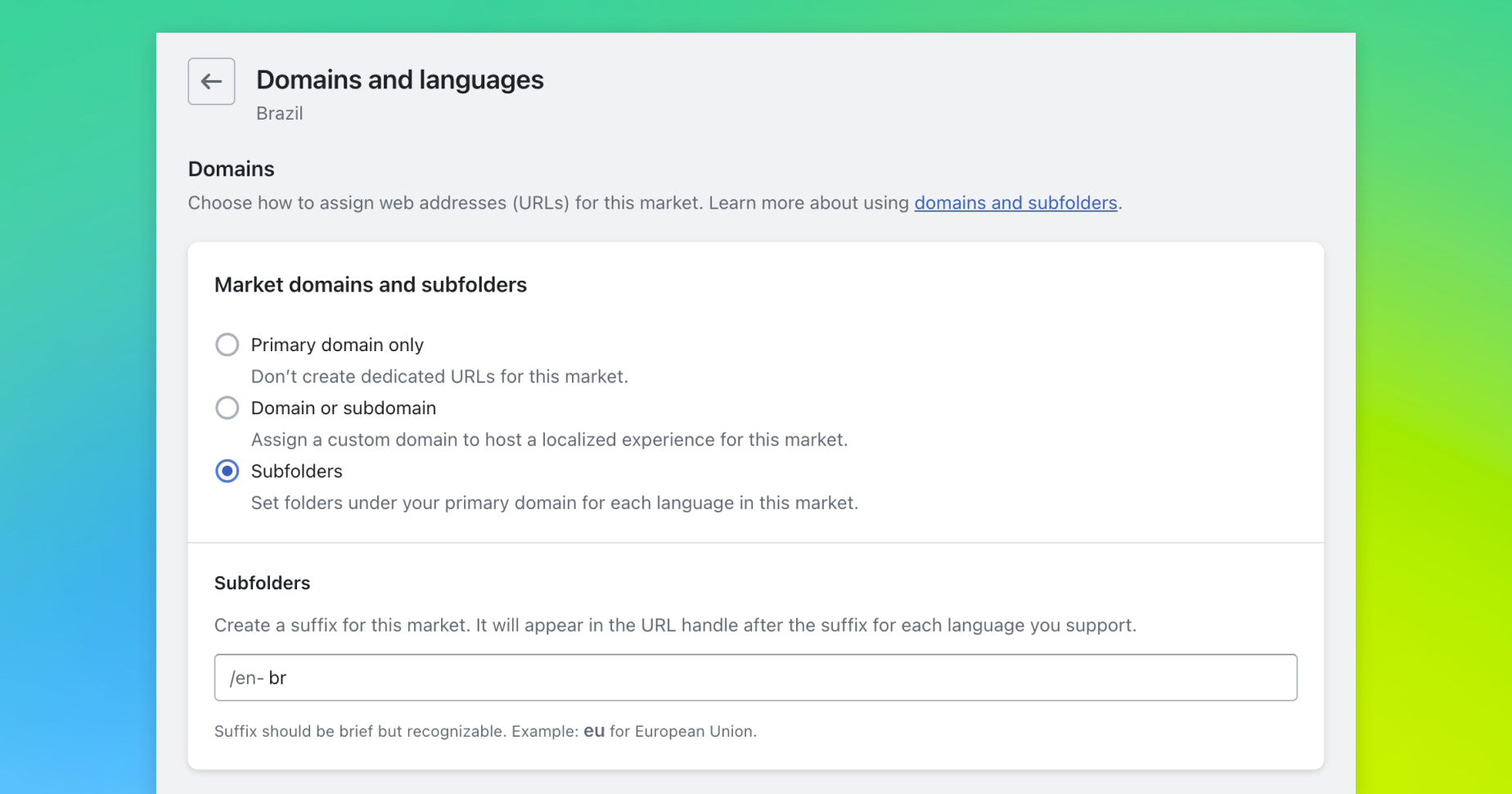
Best practices for subfolders
While subfolders help with organic search exposure, be mindful not to create too many unique URLs. We recommend creating single-country markets with subfolders for countries or regions where you are specifically focusing on growth and/or have unique experiences or different content.
Having unique subfolders based on the presence of a local currency or local language alone is not recommended; the experience should be differentiated based on unique content or structure of the site. For example, if you’re based in the US, and you sell to Canada (where there are two dominant languages, English and French) and you also sell in France (where the dominant language is French), you’re better off targeting Canadian French and France French on a single shop.com/fr subfolder. Only if you had different experiences between the two (for instance different pricing, images, or different product catalogs) would you want a unique country-language subfolder pair likeshopxyz.com/fr-caandshopxyz.com/fr-fr.
了解更多关于子文件夹和搜索引擎优化的策略in the Help Center.
5. Improve conversion by translating your store
Boost traffic, improve your SEO, and build trust with audiences around the world by localizing the content on your Shopify store for different markets. On average, brands see a13% increase in conversion ratewhen a storefront is translated into a buyer’s local language.
TheTranslate & Adapt应用程序是由Shopify,专门为Shopify。It lets you auto-translate up to two languages for free and manually add as many translations as you wish. The side-by-side editor makes it easy to compare and review your translations, and can also be used to adjust content between markets that speak the same language to ensure cultural, seasonal, and regional relevance.

Download the apphere.
See more localization optionshere.
6. Optimize your shipping rate strategy
At activation, Markets Pro will suggest what shipping rates to charge customers across different countries. You will have the option to select flat rates that are calculated based on your expected label costs on average, or dynamic rates that cover your label costs per order. You can also choose to opt out of those options andset shipping rates yourself. If you decide to set your own rates, consider your business goals:
Setting rates to prioritizemargin
If your goal is to protect your margins, then you may decide to pass the entire cost of the label to the buyer using flat rates (to cover your average label cost) or dynamically calculated rates (to pass along the cost on a per order basis).
We generally recommend the flat rate approach, as this provides the best buyer experience; customers know what they are going to be charged for shipping upfront and can factor that into their buying decision, rather than waiting until they get to checkout. Flat rates encourage buyers to increase cart size and boost average order value, with peace of mind that the shipping rate will not change.
If you choose the flat rate strategy and sell a wide range of product sizes (e.g., 1 to 20 pounds), consider setting two flat rates to cover the increased cost for higher weight products (e.g., 1 to 8 pounds and 9 to 20 pounds).
Learn more about how to configure shipping rateshere.
Setting rates to prioritizegrowth
If your goal is to increase global sales volume, then keeping shipping costs low could help boost conversion at checkout. Consider subsidizing the shipping rates (charging the buyer less for shipping than your label cost). You can do this by creating subsidized shippingflat ratesand/orfree shipping rates.
A common practice is to subsidize label cost, keeping shipping rates low while increasing international product prices to offset the subsidy. This approach encourages higher checkout conversion and also protects margins. If you’re transitioning from offering standard shipping methods to express shipping, this approach is especially recommended.
Learn more about how to adjust product prices by markethere.
7. Update your shop’s shipping policies and FAQs
Update your store’sshipping policiesso customers know the new benefits of your online store. For example:
- A list of countries where you ship products to.
- Duties and taxes are added at checkout, so there will be no surprise fees at delivery.
- Packages arrive within one to five days, anywhere in the world, with express shipping and pre-customs clearance.
- Customers can use their own local currency and a local payment method at checkout.

8.投资于营销超负荷增长ob欧宝娱乐app下载地址your international markets
Now that Markets Pro is handling the operational complexity and buyer experience for your global business, it’s up to you to grow brand awareness in these new markets. Start investing in marketing campaigns in your top secondary markets to build a customer base and drive international sales.
Traffic Generation
Create region-specific campaigns:To optimize advertising in new regions, we recommend splitting your campaigns and localizing both their copy and imagery. If you use dynamic retargeting in Facebook, Google, or Pinterest, localize information like language, pricing and stock availability to the buyer’s regional preferences. There are many options when it comes to displaying the local currency and language with your social advertising and retargeting. Here are a few recommendations that work well with Shopify Markets:
Check these guides to learn more about advertising on social media platforms:
Make sure to review the advertising policies on your chosen ad platform based on industry and region.
Find and partner with regional influencers:Regional influencers can help you drive traffic, convert new buyers, and sell your products in the new regions you’re expanding to. Connecting with the right influencers is easily done with Shopify Collabs, Shopify’s influencer marketing tool built right into your admin.Install Collabsin the app store, set up your brand profile, and get started recruiting creators by clicking on Recruit.
There you’ll find a huge database of influencers you can search and filter by location, keywords, social platform, audience size, and more. Sending samples, incentivizing with affiliate commissions, tracking performance, and paying commission can all be done right from Shopify, and Collabs is also free to install with your Shopify plan.

Lead Capture and Nurture
Create first-purchase promotions for international customers:Check your current customer list to see if you have any customers who live in your new countries already (i.e., signed up to be on your email list, but haven’t made a purchase because you didn’t sell there at the time.) Save thatsegment, set up anexclusive discountthat can only be used by that segment, and then send a Shopify Email to that segment promoting the discount and your new availability there.
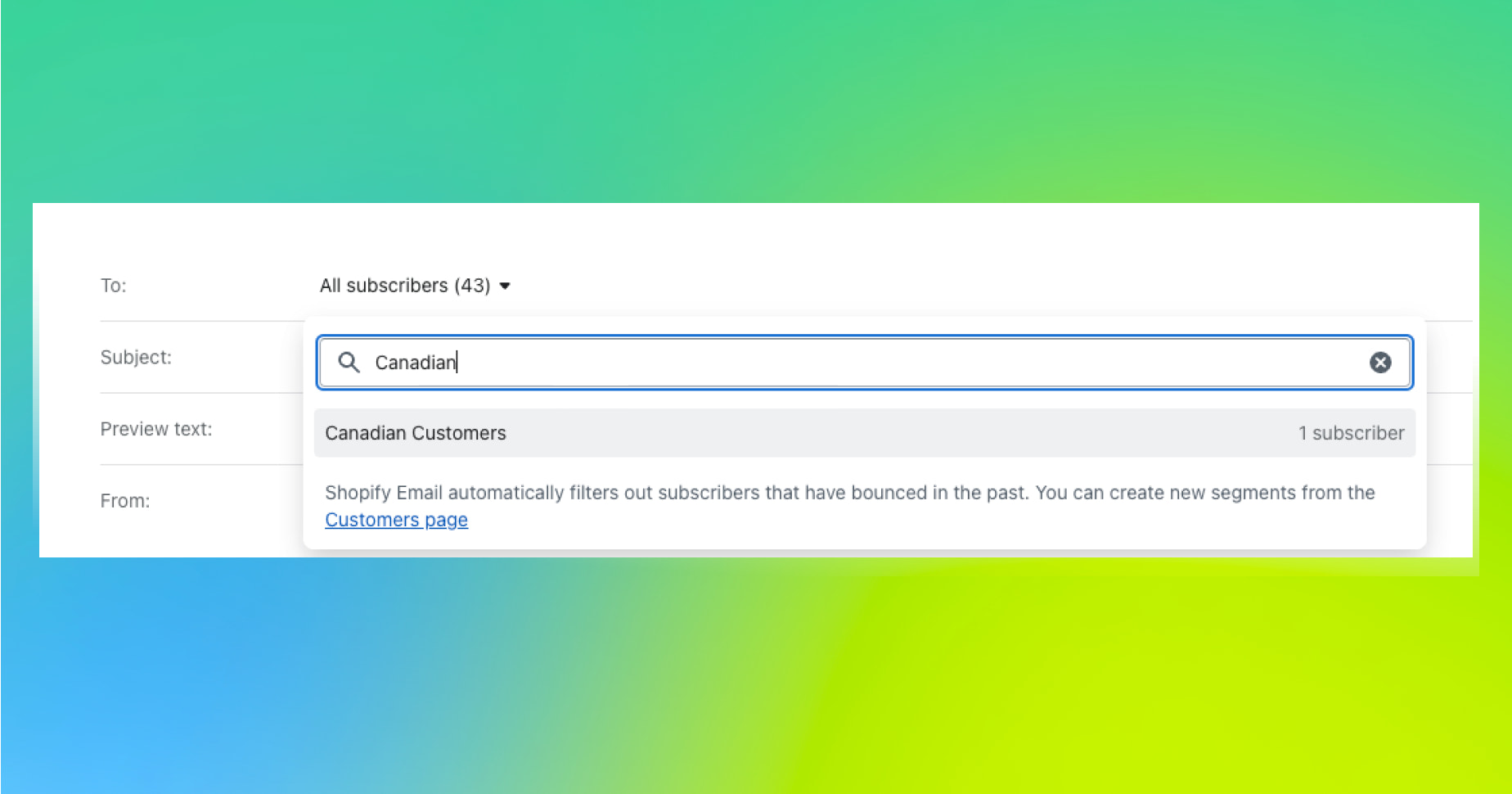
Add or update an instant answer inShopify Inbox:Let international customers know your new shipping availability in the new countries by updating the automatic answers customers can find in your Shopify Inbox online store chat.
AddShopify Formsto your store to build your email list:When you’re promoting your store in a new market, you’re spending time and money getting people to your store, and it’s important to make the most of every visit you get. Shopify Forms is a free lead capture tool that lets you easily promote discounts or other benefits of being on your list, so even if someone isn’t ready to buy, you can email them and build a relationship.
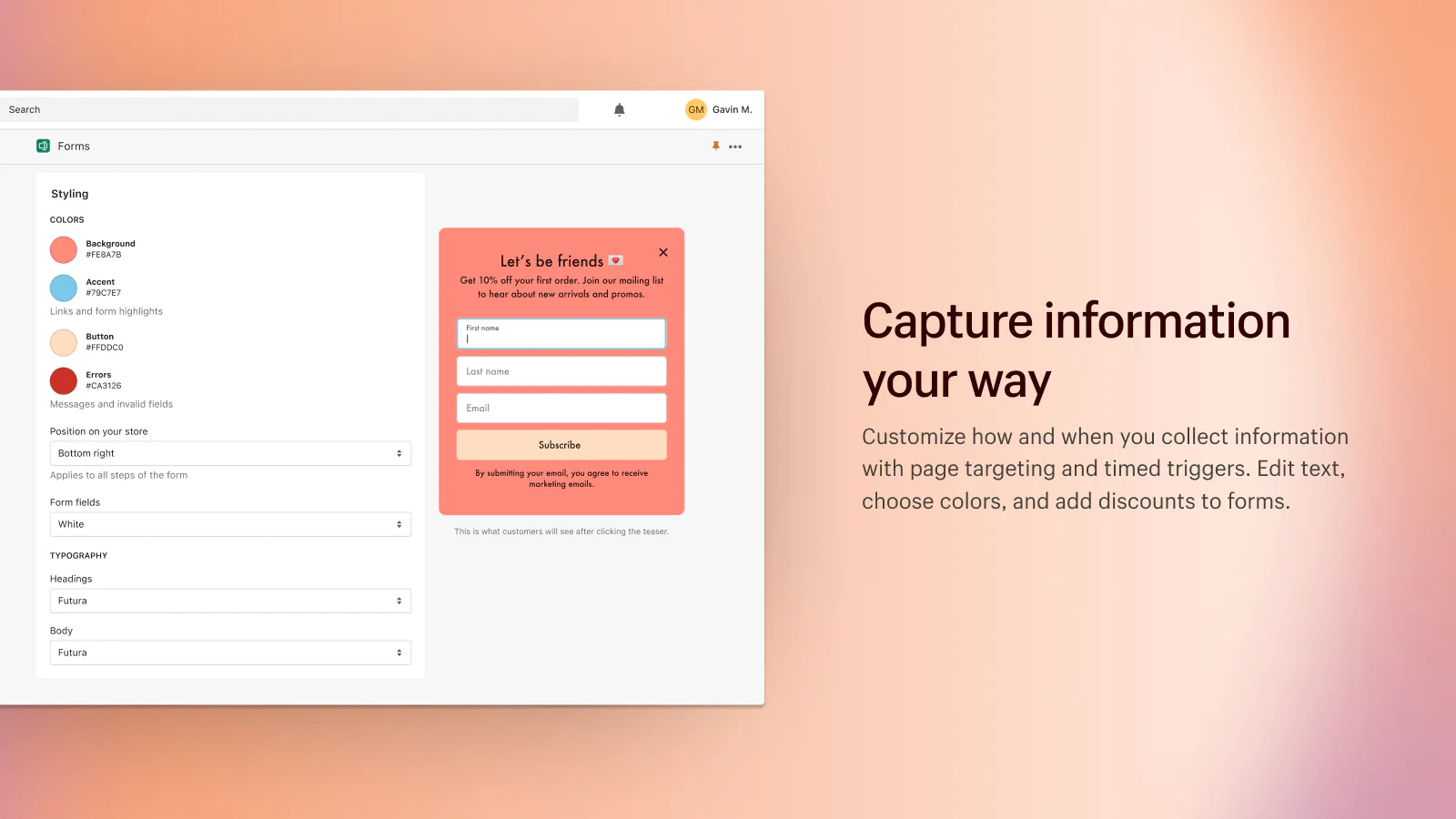
You can download the Shopify Forms apphere.
Limitations
Shopify Forms works with Shopify Email’s double opt-in, and won’t trigger any marketing automations from Shopify until an email is confirmed. However, we don’t yet support multiple languages on a form, so localized stores can only show a form in one language for now.
9. Comply with regional consumer privacy rules
While Markets Pro is GDPR compliant with the information it accesses through Shopify’s checkout, it does not imply compliance on behalf of the merchant or the data/cookies merchants have access to when a consumer visits their storefront.
Merchants should use explicit opt-ins in order to comply with UK and EU consumer privacy rules. Consider installingShopify隐私和遵从性to manage consent and data sharing, and build trust with your online store visitors.
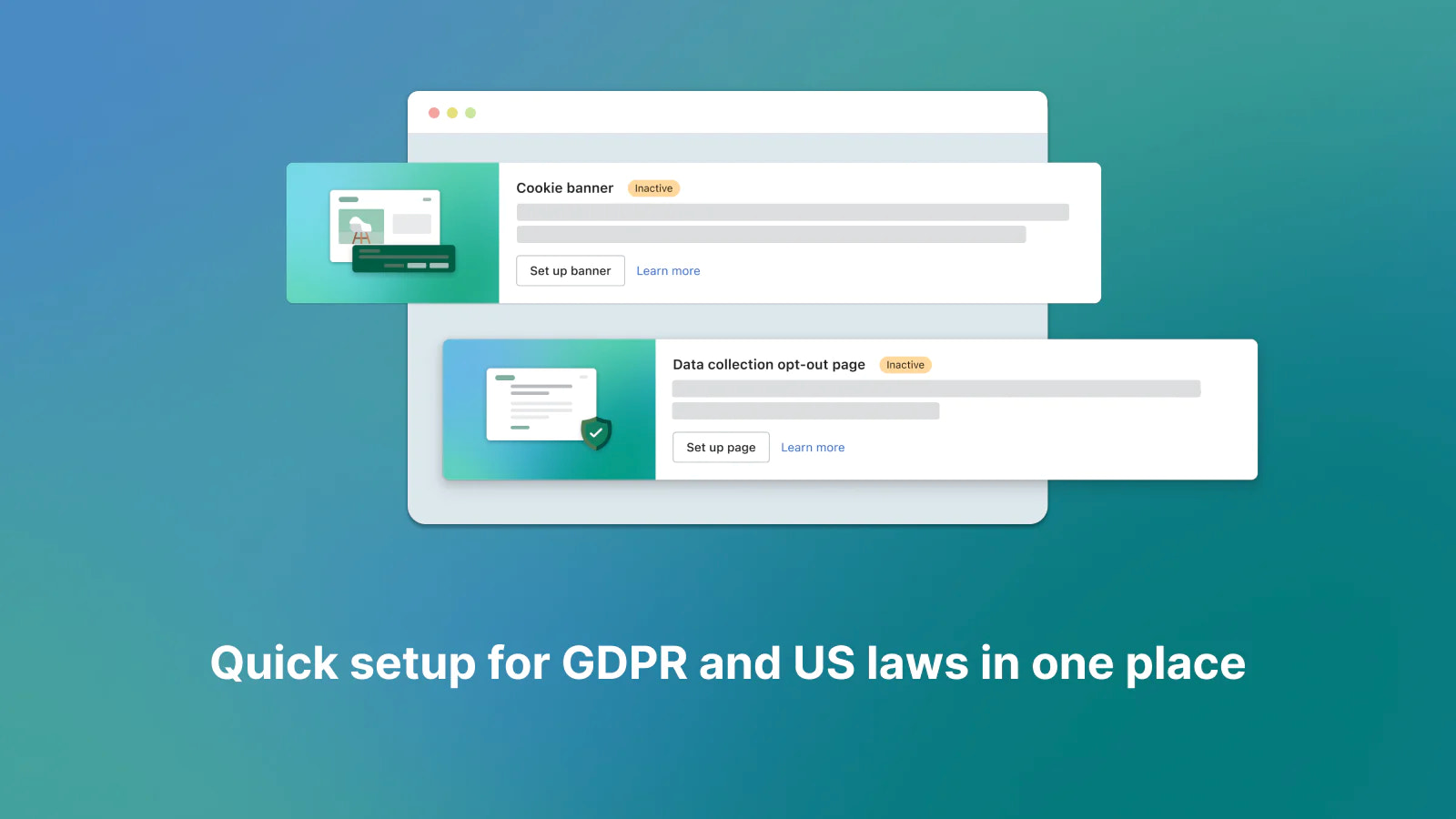
For more options, seethird-party cookie tracking appsthat block tracking or provide data/cookie management.
10. Prepare to receive weekly payouts
Markets Pro payments are made four times per month, with “Flow Commerce”appearing as the depositor on your banking statement. You can find payout details in your admin by taking the following steps:.
- In your Shopify admin, go to Finances > Payouts
- Click “Transactions.”
- Click “More filters.”
- Click “Payment method.”
- Select “Markets Pro.”
- Click “Done.”
The breakdown of fees include taxes, duties, remitted VAT, shipping costs, and the Markets Pro processing fee. For accounting purposes, refer to the fee breakdown by clicking on each order.
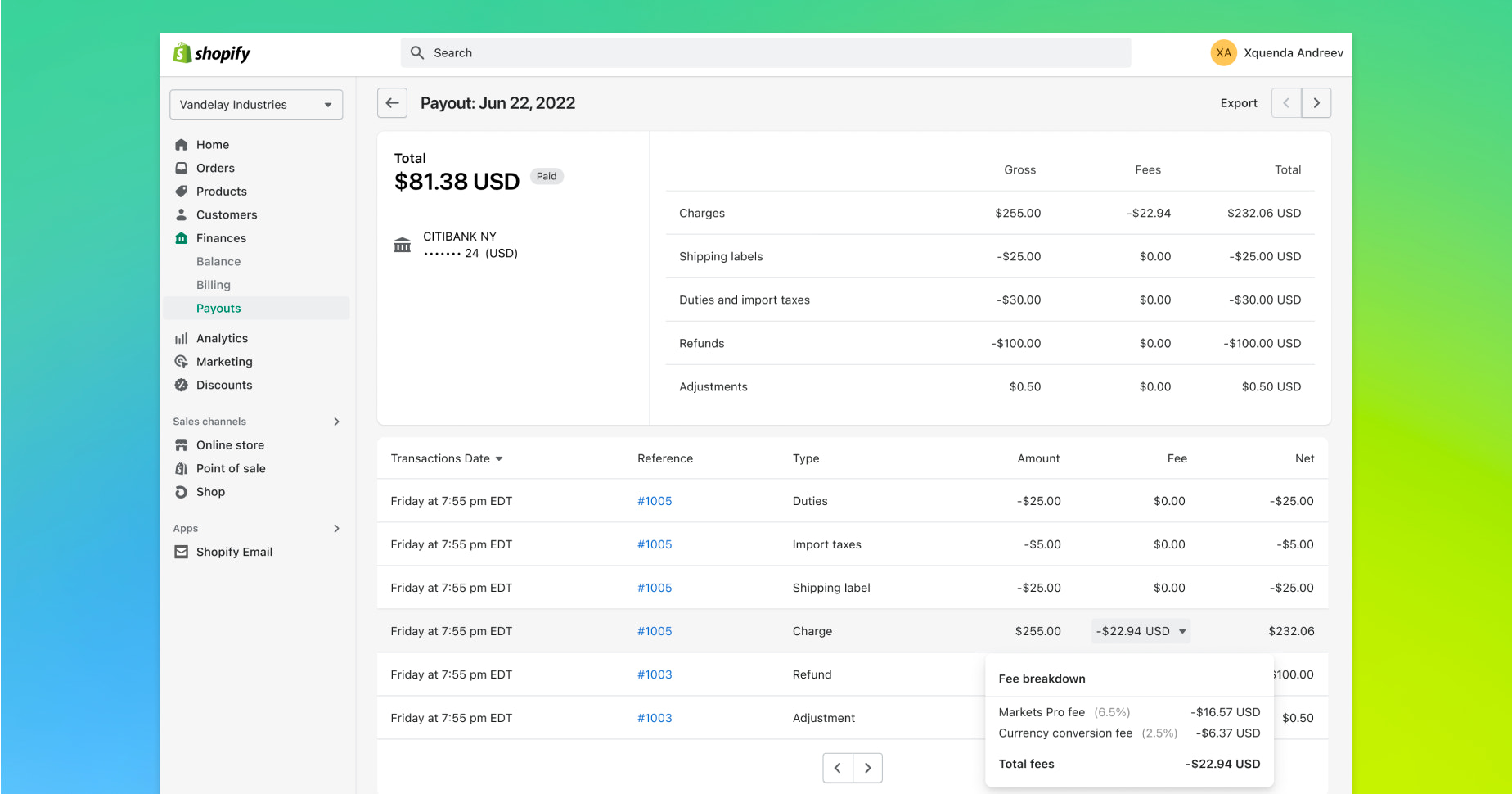
Only fulfilled orders with valid tracking numbers are eligible for payouts. Transactions will be shown as pending until the next payout is issued.
More detailed information about payouts isavailable in the Help Center.
Get ready for global greatness
We hope that this checklist of best practices will help you make the most of your experience with Markets Pro. Remember, expanding your business globally is a journey—one that can be accelerated with the right combination of steps.
For more motivation to reach for global greatness, check out a merchant success story fromWOLFpak— a brand that leveraged Markets Pro to grow cross-border revenue by 528%.

